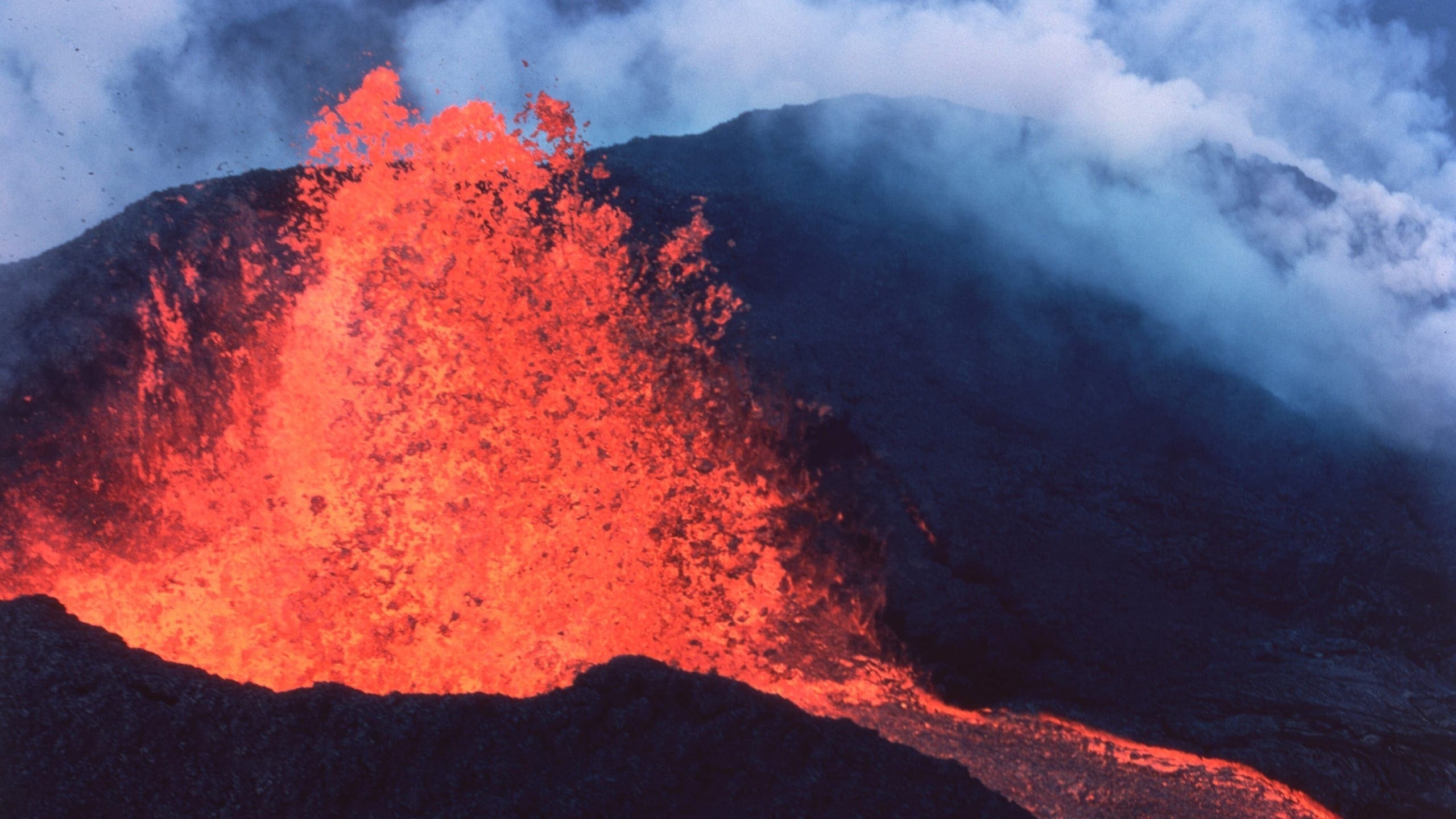About Hawai’i Volcanoes National Park
Hawai‘i Volcanoes National Park is on the southern end of the Island of Hawai‘i, the southernmost island of the Hawaiian Archipelago. The park was established by Congress on August 1, 1916, as Hawai‘i National Park (subsequent legislation separated Hawai‘i Volcanoes National Park and Haleakalā National Park).
Today, Hawai‘i Volcanoes National Park protects approximately 330,086 acres1 of public land, which includes some of the most unique geologic, biologic, and cultural landscapes in the world. Extending from sea level to the summit of Mauna Loa at 13,677 feet, the park encompasses the summits and rift zones of two of the world’s most active shield volcanoes— Kīlauea, representing the newest land in the Hawaiian Islands chain, and Mauna Loa, the largest volcano in the world.
While these two volcanoes are the primary features of the park and the principal reason for its establishment, this volcanic topography also supports one of the most fascinating biologic landscapes in the world, sustaining highly diverse populations of plant and animal communities across seven ecological life zones. Located more than 2,000 miles from the nearest continent, Hawaiian plants and animals have evolved in almost complete isolation for the past 30 million years. As a result, more than 90% of the native terrestrial flora and fauna in Hawai‘i are endemic to this small archipelago. The park provides habitat for 60 federally listed endangered or threatened species and 9 species that are proposed for listing. Included among these species are the nēnē (Hawaiian goose), ‘io (Hawaiian hawk), and ‘āhinahina (Mauna Loa silversword). Considering this diversity of life and its distinction on the planet, Hawai‘i Volcanoes National Park is both a laboratory for the study of biogeography and evolution within the Pacific Islands and a cornerstone for recovery of native Hawaiian species found nowhere else in the world.
The park also plays a unique role in the history of human development on the Hawaiian Islands and remains an important home to living cultures in Hawai‘i. Just as the volcanic and biologic features of the land have shaped the landscape of Hawai‘i Volcanoes National Park, so too have the people who have been a part of its history. Over five centuries before the establishment of the park, Native Hawaiians lived, worked, and worshipped on this sacred ground. Later, in the 19th and early 20th centuries, adventurers, explorers, scientists, philanthropists, and individuals also left their mark on the landscape. Today, ancient petroglyphs, stone walls, and footpaths remain between massive lava flows. Historic housing districts, historic structures, and historic roads dot the developed corridors of the park, together revealing the diverse cultures and history that have been, and continue to play, an integral role on this landscape.
Hawaiʻi Volcanoes National Park contains 123,100 acres (official deeded acreage) or 130,950 acres (GIS estimate of acreage) of federally designated wilderness set aside in 1978. In 2012, an additional 121,015 acres was determined as eligible for preservation as wilderness in the Kahuku Unit. In 1980, Hawai‘i Volcanoes and Haleakalā National Parks were jointly designated as “Hawaiian Islands International Biosphere Reserve” by United Nations Educational, Scientific and Cultural Organization (UNESCO), and seven years later, in 1987, Hawai‘i Volcanoes National Park was also declared a World Heritage Site by the World Heritage Convention of UNESCO. Very few areas in the United States and the world are designated as both a Biosphere Reserve and World Heritage Site.
1. This number refers to the official deeded acreage including the 9,679-acre ‘Ōla‘a property. ‘Ōla‘a is outside of the park’s official designated boundary, but has been managed by the park since federal acquisition in 1952. Furthermore, determining acreage at Hawai‘i Volcanoes National Park is a complex process by which varying sources provide different estimations of total acreage. The GIS estimate of total acreage is 368,106 acres.
Source: Foundation Document – Hawaiʻi Volcanoes National Park
Fast Facts:
| Date the Park was Established: | August 1, 1916 |
| Park Area (as of 2019): | 325,605.28 acres (1,317.7 km2) |
| Recreational Visitors (2018 Total): | 1,116,891 visitors |


